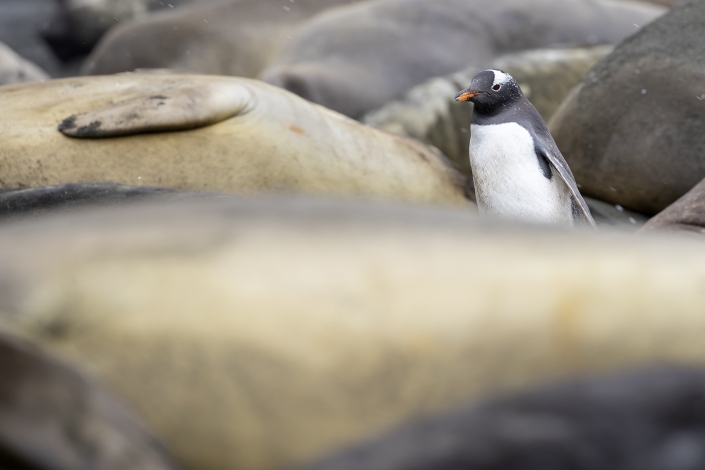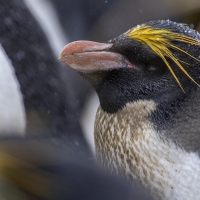This post is also available in: Swedish
Gentoo penguin – Pygoscelis papua
Gentoo penguin – Pygoscelis papua
is a penguin species in the genus Pygoscelis, most closely related to the Adélie penguin and the chinstrap penguin. The earliest scientific description was made in 1781 by Johann Reinhold Forster with a reference point of the Falkland Islands. They call in a variety of ways, but the most frequently heard is a loud trumpeting which the bird emits with its head thrown back.
The gentoo penguin is one of three species in the genus Pygoscelis. The gentoo penguin is easily recognized by the wide white stripe extending like a bonnet across the top of its head and its bright orange-red bill. It has pale whitish-pink webbed feet and a fairly long tail – the most prominent tail of all penguin species. Chicks have grey backs with white fronts. As the gentoo penguin waddles along on land, its tail sticks out behind, sweeping from side to side, hence the scientific name Pygoscelis, which means “rump-tailed”. The specific name ‘papua is a misnomer; in the original description, Johann Reinhold Forster, a naturalist who had circumnavigated the world with Captain James Cook, mistakenly assumed that the species occurred in Papua New Guinea.The breeding colonies of gentoo penguins are located on ice-free surfaces. Colonies can be directly on the shoreline or can be located considerably inland. They prefer shallow coastal areas and often nest between tufts of grass. In South Georgia, for example, breeding colonies are 2 km inland. Whereas in colonies farther inland, where the penguins nest in grassy areas, they shift location slightly every year because the grass will become trampled over time.

















